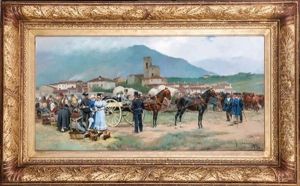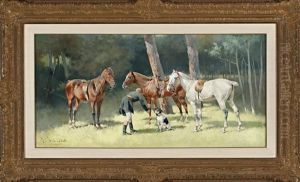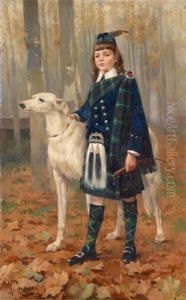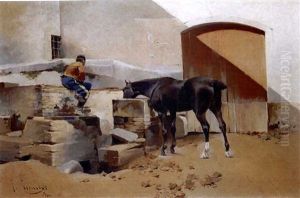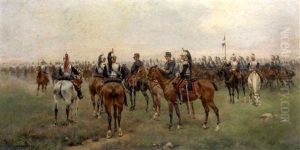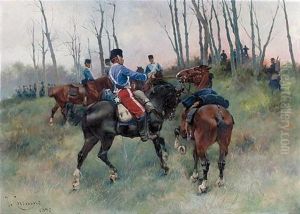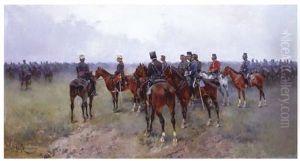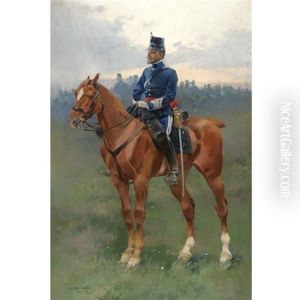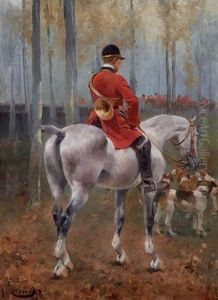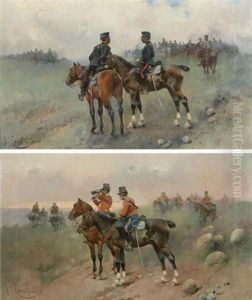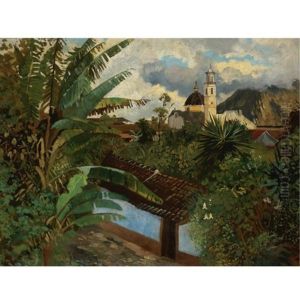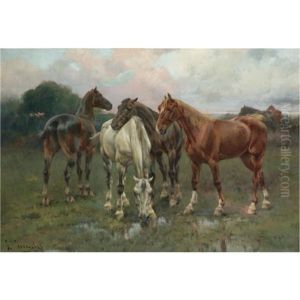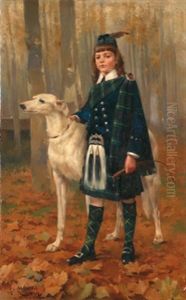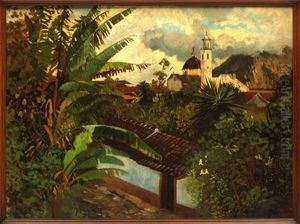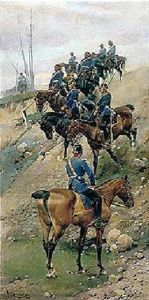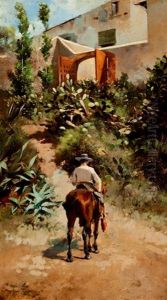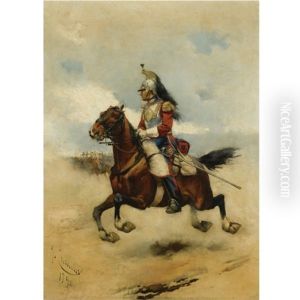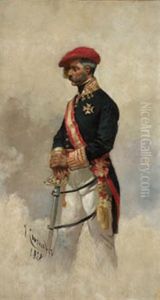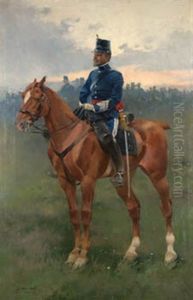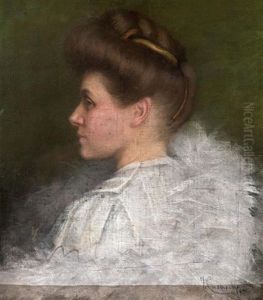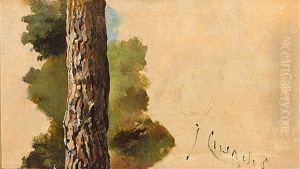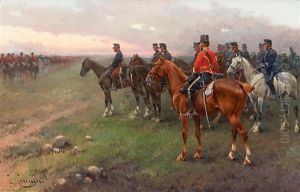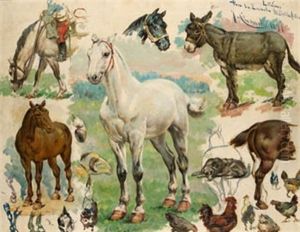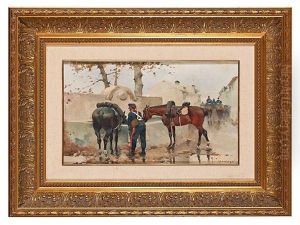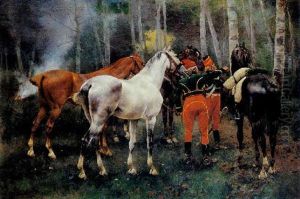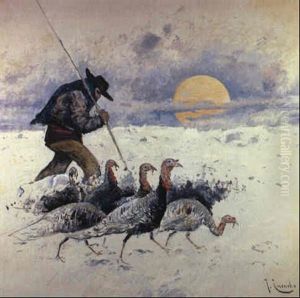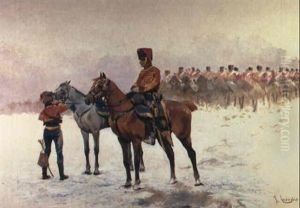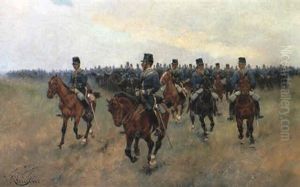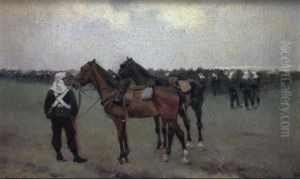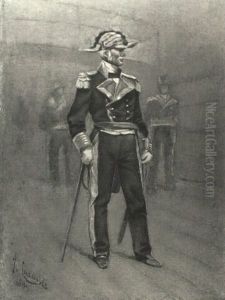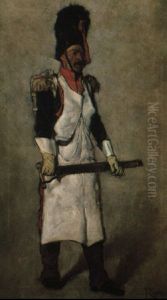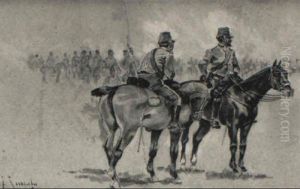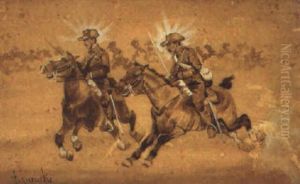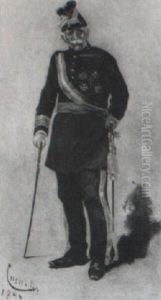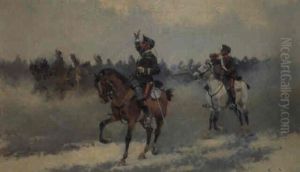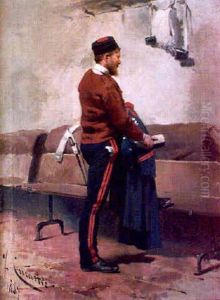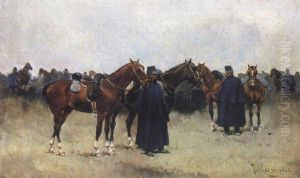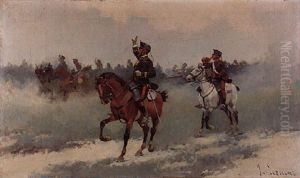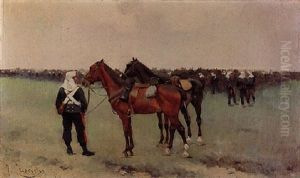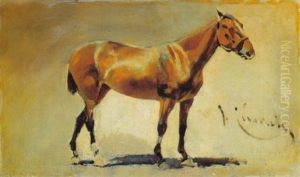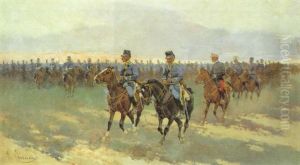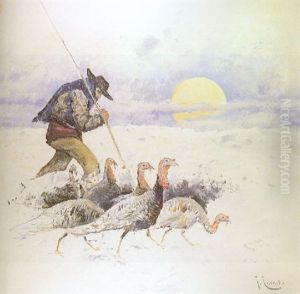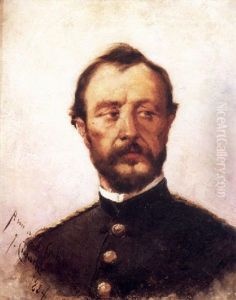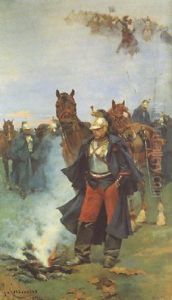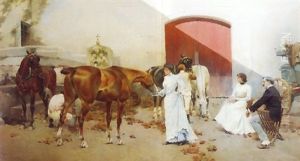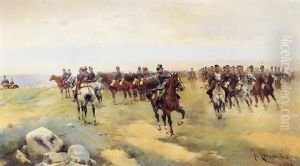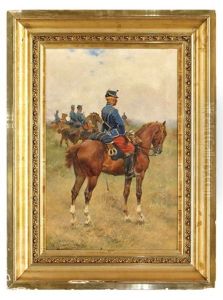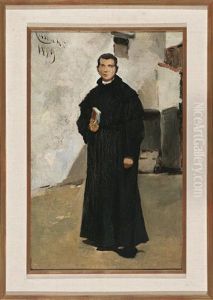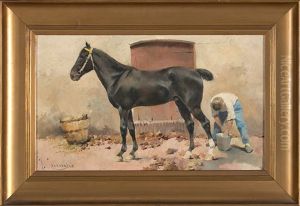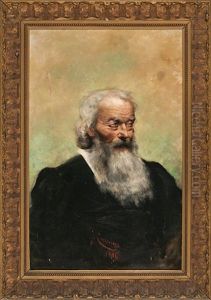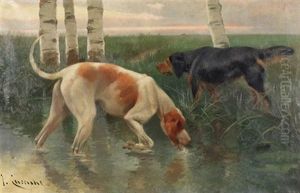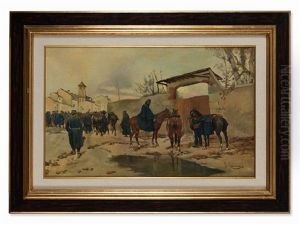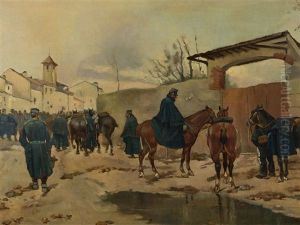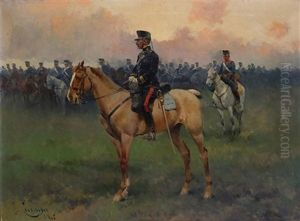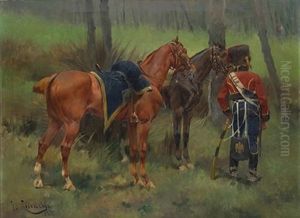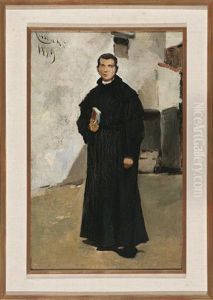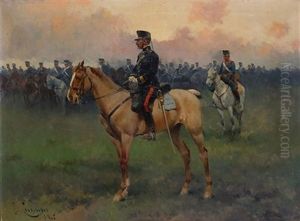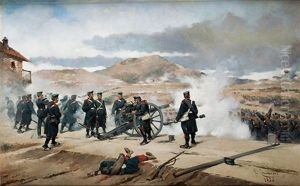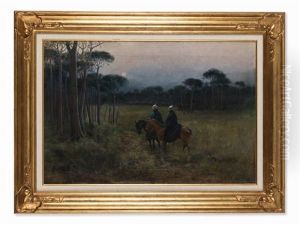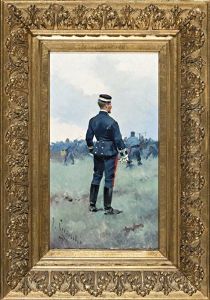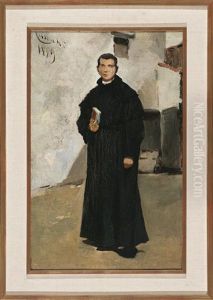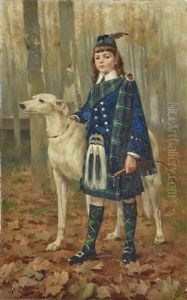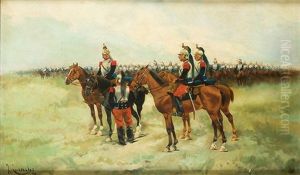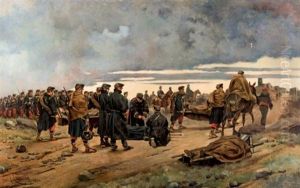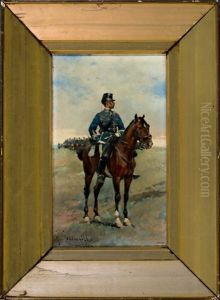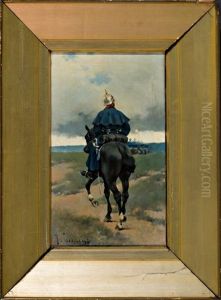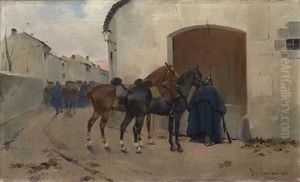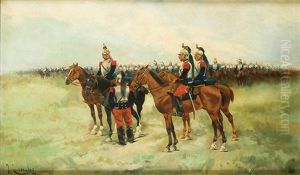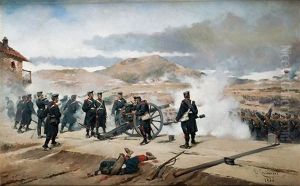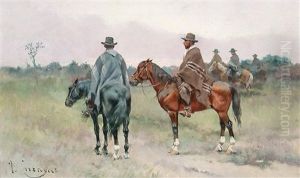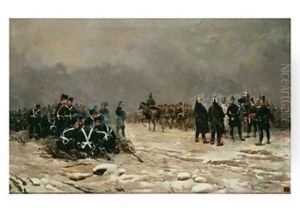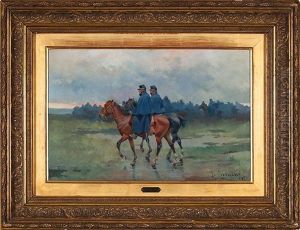Josep (Jose) Cusachs y Cusachs Paintings
Josep Cusachs i Cusachs, also known as Jose Cusachs, was a Spanish painter born on November 18, 1851, in Barcelona, Catalonia. He was noted for his military themes and equestrian portraits, capturing the dynamic movement and drama of his subjects with a vivid and energetic brushwork. Cusachs came from a family with military ties, which influenced the subject matter of his art.
Trained at the School of Fine Arts in Barcelona, Cusachs later moved to Paris, where he continued his studies and was influenced by the French academic painting style. His time in Paris exposed him to the works of renowned artists and the evolving trends in European art, which would contribute to his development as an artist.
Cusachs returned to Spain and became well-known for his depictions of military scenes, which were not only appreciated for their artistic quality but also valued for their historical accuracy. He often accompanied the Spanish Army on various campaigns, including the Third Carlist War and the Spanish-American War, serving both as a soldier and as an official painter. This firsthand experience provided him with the material and inspiration to create works that were praised for their realism and intensity.
In addition to his military paintings, Cusachs also produced genre scenes, landscapes, and portraits. His portraits of prominent individuals of his time were particularly admired for their psychological depth and technical skill. He was a member of the Reial Acadèmia Catalana de Belles Arts de Sant Jordi (Royal Catalan Academy of Fine Arts of Saint George) and received numerous awards and accolades throughout his career.
Josep Cusachs i Cusachs' work is characterized by a strong use of color and light, with a loose, impressionistic touch that was ahead of his time in Spanish art. His legacy includes influencing subsequent generations of artists, particularly in Catalonia, and his paintings can be found in various museums and private collections.
Cusachs' life was cut short when he died on March 1, 1908, in his hometown of Barcelona. Despite his relatively brief career, he left a significant mark on the Spanish art scene of the late 19th and early 20th centuries, and his works continue to be studied and appreciated for their historical significance and artistic merit.
